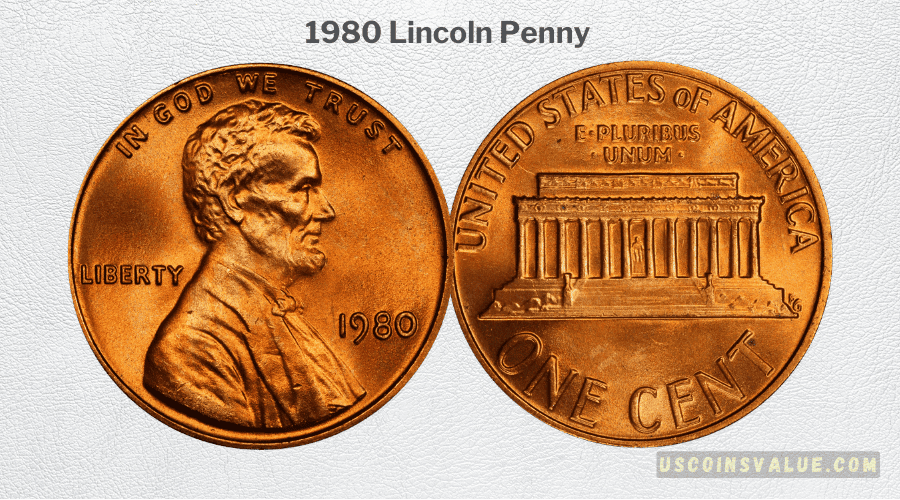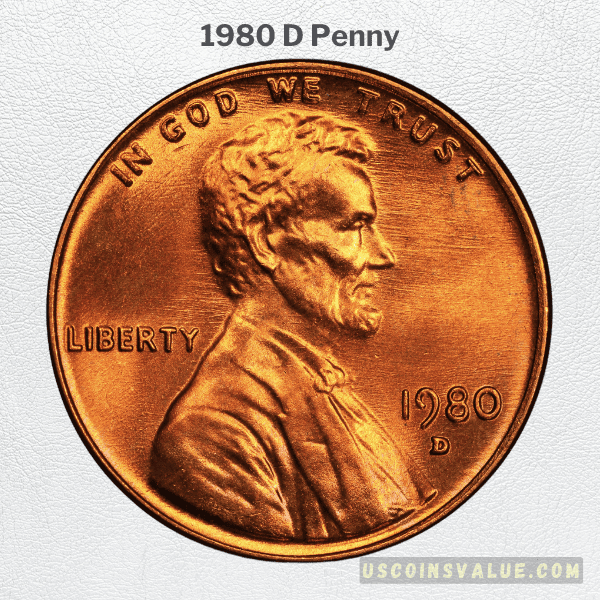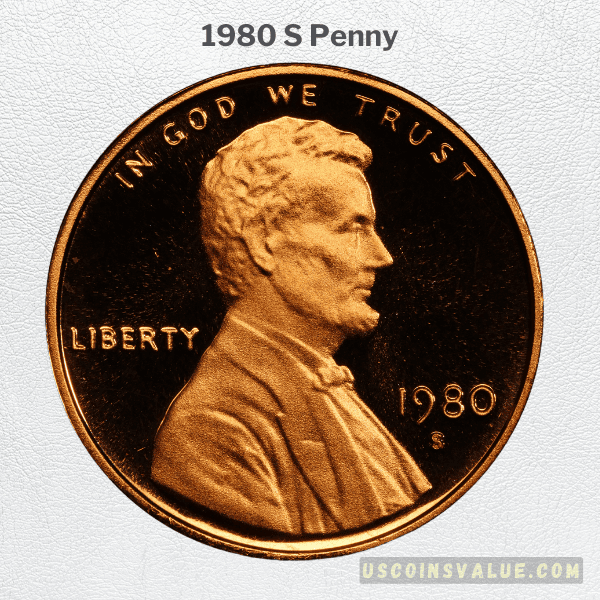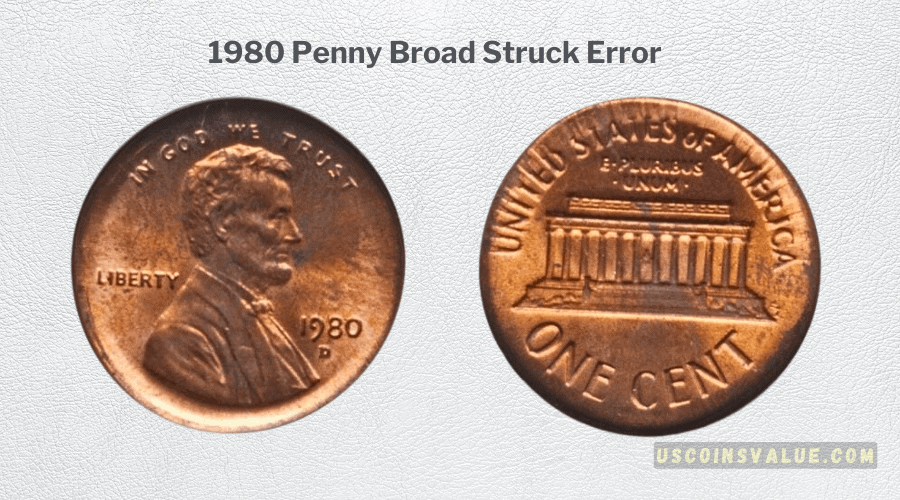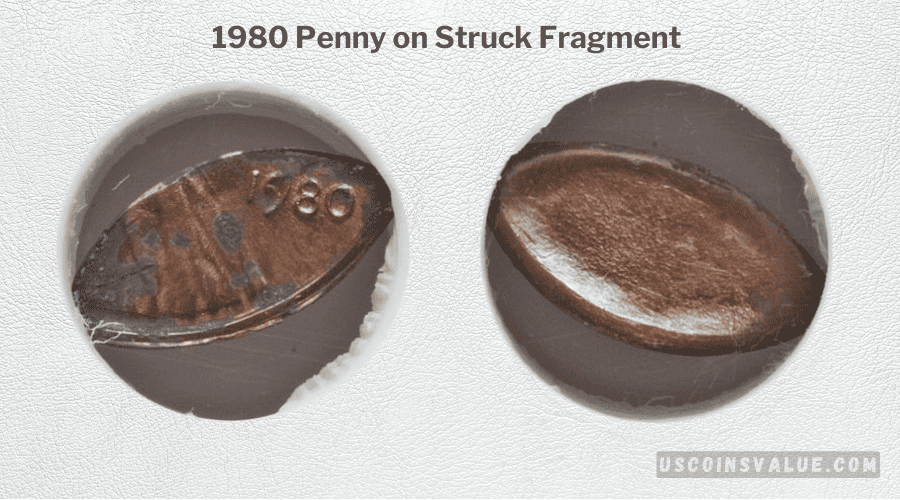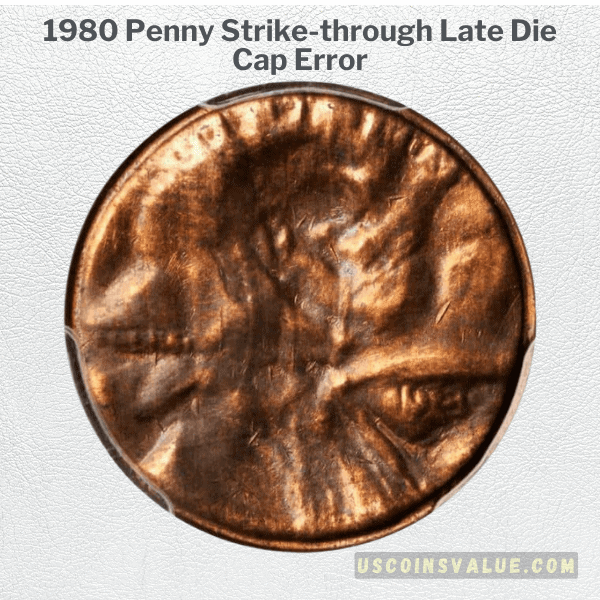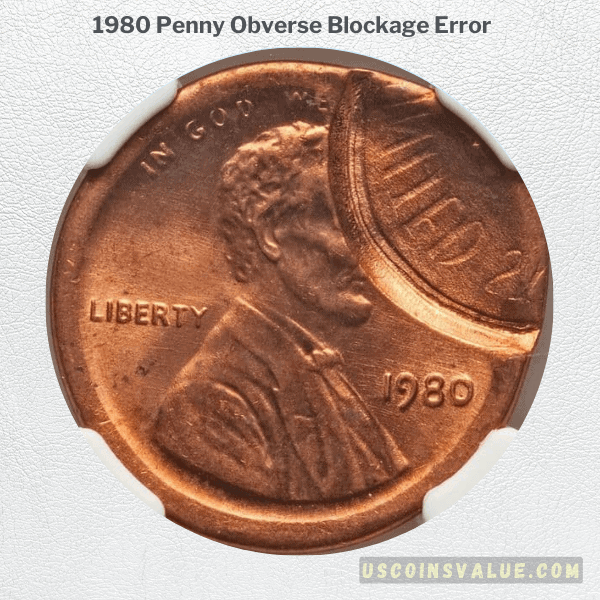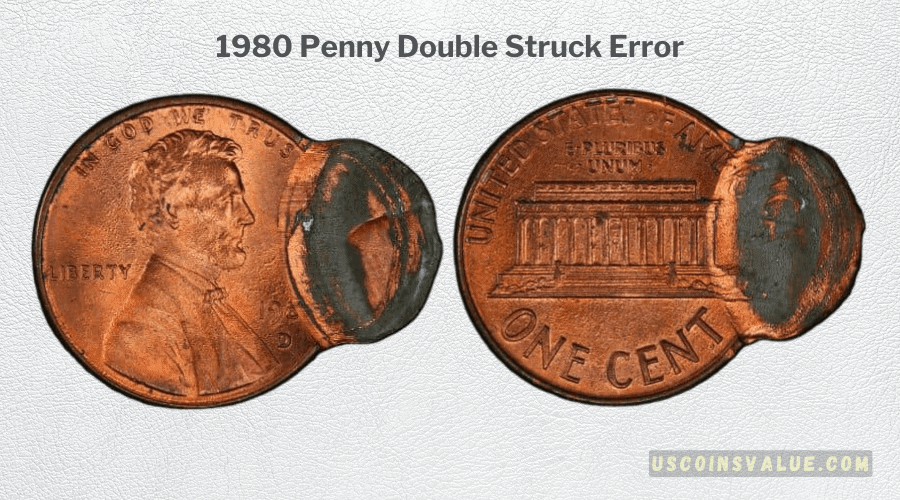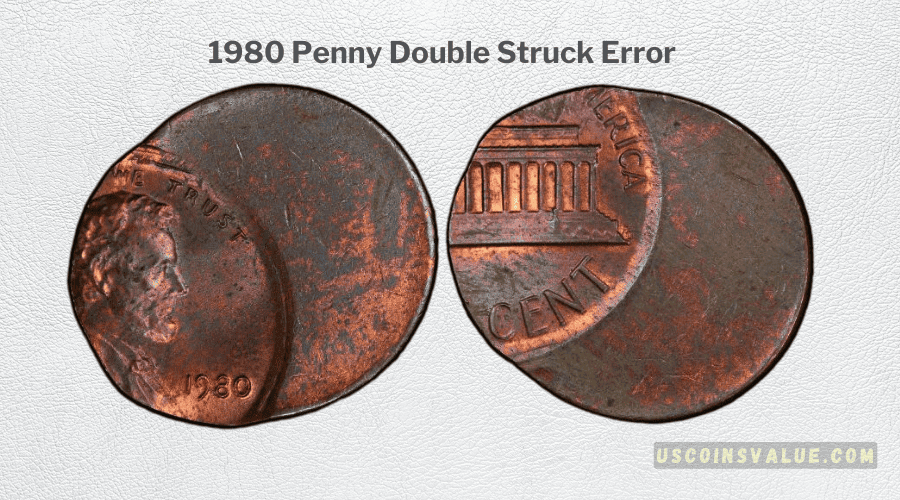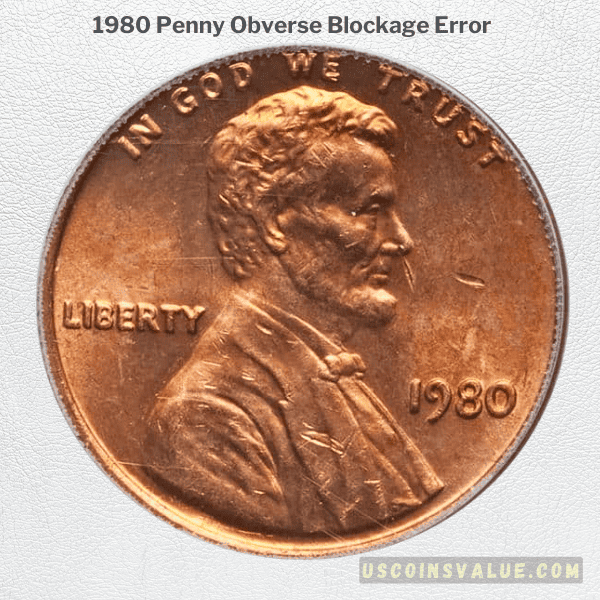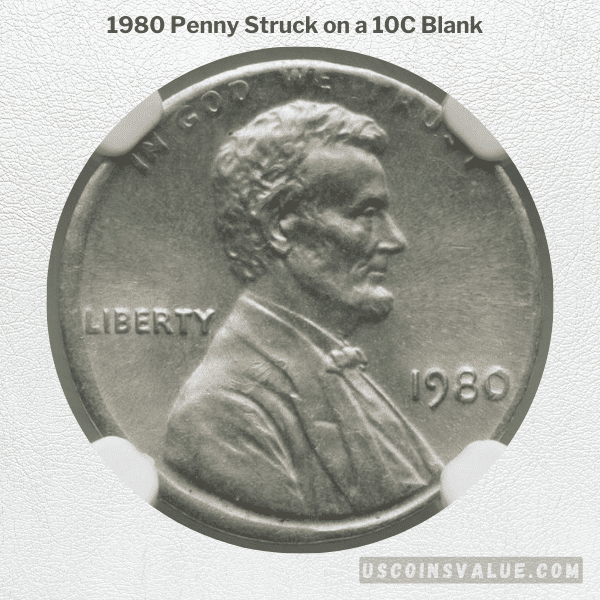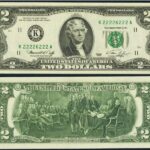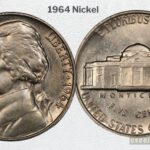If you have a regular, circulated 1980 Lincoln penny among your loose change coins, its $0.01 face value is all you can get from it.
But a rare 1980 penny can be worth a lot more if it has features valued by coin collectors, up to $3,680 for the highest-valued 1980 penny so far.
So, what makes a 1980 penny rare and valuable in the hands of coin collectors?
History, grading, mint mark, and rare mint errors are some of the top factors that can turn the almost negligible value of a penny into thousands of dollars.
Because these factors can determine the value of any penny, this article focuses on how they can make the 1980 penny value appreciated.
We start by telling you how history, grading, mint mark, and rare mint errors increase the value of a 1980 Lincoln penny. But look out for precise auction price examples for the rare 1980 penny within the details.
1980 Lincoln Penny History
Coins carry a dense history on their “heads” and “tails”. For the 1980 penny, that history dates back to 1909. That year, the US government honored the memory of the 16th president of the republic, Abraham Lincoln, on the centenary of his birth.
Following that decision, President Lincoln became the first real historical figure engraved on a US currency coin. This was also the first time the motto, “In God We Trust” appeared on the penny.
Victor David Brenner had the honor of designing both the obverse (heads) and the reverse (tails) sides of the coin. And while the reverse design changed along the way, the obverse has remained intact to date.
1980 Penny Obverse
Lincoln’s bust takes center stage on the 1980 penny obverse. Brenner curved the inscription, “IN GOD WE TRUST” above Lincoln’s head. The word “LIBERTY” is clearly engraved to the left in a horizontal presentation.
The mint year,1980, appears to the right in front of the President’s bust. Where included, the mint mark is just below the mint year.
For keen observers, the artist’s initials “VDB” can be seen in a tiny script under Lincoln’s shoulder.
1980 Penny Reverse
In 1959, the Lincoln Memorial theme replaced the 1909 wheat theme on the reverse side of the penny. Frank Gasparro worked on the design to commemorate a century and a half since Lincoln’s birth.
That’s why the reverse of the 1980 penny shows the Lincoln Monument at the center. The unity motto associated with Lincoln’s effort to unite America, “E PLURIBUS UNUM,” appears between the monument and the inscription “UNITED STATES OF AMERICA.” The coin denomination, “ONE CENT,” is curved below the monument.
As with the obverse, the artist’s initials, “FG” appear in a tiny font at the bottom of the monument on the right side.
All these 1980 penny obverse and reverse design details appear as described in most pennies. But, as we tell you later, errors in the design appreciate instead of depreciating the 1980 penny value.
1980 Penny Specifications
Key in discussing the history and value of a penny is its metallic content. In fact, the cost of making pennies has been a topic of discussion at the US Congress over the years. The main reason for that discussion is the cost of the metals used to make coins.
Going by the coin metal value, the 1980 penny has more melt value ($0.025) than most pennies minted later. That’s because it is 95% copper and 5% zinc.
In 1982 the penny’s metallic content changed to 97.5% Zinc and 2.5% Copper, lowering its melt value to around $0.007, going by the US Coin Book.
The complete 1980 penny specs are as follows:
- Mintage: 12,558,358,466
- Face value: $0.01
- Melt Value: $0.025
- Metallic content: 95% Copper & 5% Zinc
- Weight: 3.11g
- Diameter: 19mm
- Edge: Plain (no reeds)
1980 Penny Grading
Grading is the primary determinant of what a penny is worth beyond its face value. A coin’s grade describes its state or condition of wear and predetermines its price value in the market.
If you sell, buy, or invest in coins, it is important to be familiar with the Sheldon grading system, US official coin grading system adopted by the American Numismatic Association (ANA).
The two main grading services in the country, the Numismatic Guaranty Company (NGC) and the Professional Coin Grading Service (PCGC) use this grading system.
The system uses a numerical scale of 1-70, describing the condition of coins from the poorest quality to the finest in ascending order.
Coin collectors prioritize coins in the finest condition. So, in the daily coin market, you are more likely to find coins graded with:
- Numbers that describe coins struck for circulation but never circulated and still in the Mint State (MS). These go from 60-70.
- Numbers that describe coins that have been in circulation but appear as Almost/About Uncirculated (AU) These letters go from 50-59.
- Numbers that describe the condition of Proof coins (PR/PF). Mints make these for coin collectors and mint officials, so they are uncirculated.
The bottom line: In the coin market, coin collectors will describe the 1980 penny value using these grading numbers with the MS, AU, or PR/PF prefix.
Note that your 1980 penny will also show two letters after the grading number. These letters stand for the color of the coin as follows:
- RD(Red): Complete mint red luster coin.
- BN (Brown): Complete or almost complete brown patina.
- RB (Red Brown): A mixture of red luster and brown staining.
- DCAM (Deep Cameo): The fields on both the reverse and obverse sides are highly mirrored and frosted with bold contrasts.
- CAM (Cameo): The fields are highly reflective but not frosted or are frosted only on the reverse or the obverse side.
These grades will appreciate the 1980 penny value as they increase; the higher the number the higher the price. RD pennies tend to be valued higher than BN and RD coins, and DCAM coins have a higher value than CAM proof coins.
However, grading is not the only factor that appreciates a penny’s value. 1980 penny errors and varieties can also augment the price of a graded coin.
1980 Penny Varieties
The US Mint usually strikes pennies at its 3 main mints:
- The Philadelphia Mint usually creates coins with no mint mark and is occasionally represented by a “P” mint mark.
- The Denver Mint, abbreviated with a “D”.
- The San Francisco Mint usually strikes proof coins, identified with an “S”.
The Mint Mark is the main feature in differentiating the 1980 coin varieties. Often, however, the mint mark creates a significant difference in the value of pennies struck the same year.
As you will notice in the following sections, the ‘S’ variety penny tops the list of the highest-priced 1980 pennies, followed by the ‘no mint mark’ and the ‘D’ varieties in that order.
The 3 US mints struck a total of 12,558,358,466 pennies in 1980. Each of the three mints struck a specific number, as shown:
| Mint Location | Variety | Mintage |
| Philadelphia | No mint mark | 7,414,705,000 |
| Denver | D | 5,140,098,660 |
| San Francisco | S | 3,554,806 |
1980 Penny No Mint Mark Value
Going by the current NGC price guide, the 1980 no mint mark penny value varies by grade and coin color. You will make or pay $0.50 for an MS60RB 1980 no mint mark penny and $80 for an MS67RD penny.
That said, you should also know that some 1980 no mint mark pennies with high grading have sold for a lot higher prices. So far, the highest-priced 1980 no mint mark penny sold for $2,232 at the Heritage Auctions in 2017. The penny had an MS67+RD grading.
Note: A ‘+’ after the number grade indicates the coin is in a better condition than its actual grading, but lower than the next higher grade.
Other 1980 no mint mark pennies valued at over a thousand dollars are in the table below. That includes the highest-priced penny:
| Condition | Price | Year | Service/Firm |
| MS67+RD | $2,232 | 2017 | Heritage Auctions |
| MS63BN | $1,840 | 2003 | Bowers & Merena |
| MS65RD | $1,782 | 2011 | Teletrade |
| MS67+RD | $1,620 | 2020 | Heritage Auctions |
1980 D Penny Value
Like the 1980 penny no mint mark, the 1980 D penny value varies by grade and coin color. You will pay or get as low as $0.50 for an MS60RB 1980 D penny or as high as $250 for an MS67RD penny.
To date, the highest-selling 1980 D penny cost $1,092 at the Heritage Auctions in 2007. The coin had an MS67RD grading. This is the only 1980 D penny valued at over a thousand dollars.
A few other 1980 D pennies have sold for prices between $500 and $700 (including the highest-selling penny):
| Condition | Price | Year | Service/Firm |
| MS67RD | $1,092 | 2007 | Heritage Auctions |
| MS67RD | $718 | 2011 | Teletrade |
| MS67RD | $690 | 2009 | Teletrade |
| MS67RD | $632 | 2010 | Teletrade |
| MS67RD | $550 | 2012 | Teletrade |
| MS67RD | $546 | 2008 | Heritage Auctions |
| MS67RD | $546 | 2011 | Teletrade |
| MS67RD | $522 | 2003 | Teletrade |
1980 S Penny Value
As mentioned earlier, the 1980 S penny has proven more valuable in the coin market than the “D” and “no mint mark” varieties of the same year.
1980 S penny value can vary widely. Going by the NGC prices, you currently pay between $0.25 for a PF60RD Ultra Cameo penny and $25 for a PF69RD Ultra Cameo penny.
However, the highest-priced 1980 S penny sold for $3,680 at the Heritage Auctions in 2003. The coin had a PR70DCAM grading.
Over 10 other valuable 1980 S pennies have sold for over a thousand dollars. See their prices in the table, starting with the highest-priced penny.
| Condition | Price | Year | Service/Firm |
| PR70DCAM | $3,680 | 2003 | Heritage Auctions |
| PR70DCAM | $3,565 | 2003 | Heritage Auctions |
| PR70DCAM | $3,120 | 2018 | Heritage Auctions |
| PR70DCAM | $2,530 | 2002 | Heritage Auctions |
| PR70DCAM | $2,040 | 2021 | Stack’s Bowers |
| PR70DCAM | $1,524 | 2002 | Heritage Auctions |
| PR70DCAM | $1,495 | 2003 | Heritage Auctions |
| PR70DCAM | $1,440 | 2019 | Heritage Auctions |
| PR70DCAM | $1,380 | 2004 | Heritage Auctions |
| PR70DCAM | $1,292 | 2016 | Heritage Auctions |
| PR70DCAM | $1,140 | 2019 | Heritage Auctions |
| PR70DCAM | $1,080 | 2019 | Heritage Auctions |
1980 Penny Errors
You might see different 1980 penny errors discussed elsewhere. Here though, we love including those penny errors that have a face to them. We also tell you how much those errors increase the 1980 penny value.
It seems that the 1980 penny list of errors is quite long. And as you will notice, some 1980 pennies have quite interesting errors. We start with those interesting ones, then proceed to the more common penny errors.
1980 Penny Broad Struck Error
A broad struck error occurs when a coin is not properly retained within the holding collar. As such, the die gets creative and expands the size of the coin, causing it to appear like it has no edge.
The broad struck error can increase the face value of a 1980 penny by tens of dollars. An MS63BN 1980 D penny with a broad struck error sold for $57 at the Heritage Auctions in 2021. Without this error, the penny would only have collected $0.75, going by the NGC price guide.
1980 Penny on Struck Fragment
A struck fragment error appears when a mint official mistakenly strikes a coin design on a fragment of coin material, a planchet, or other materials. To be a struck fragment error coin, the piece must be a fragment before the striking.
Because it is a rare error, a 1980 penny on a struck fragment can sell for hundreds of dollars. In fact, a 1980 no mint mark penny on struck fragment sold for $336 at the Heritage Auctions in 2020.
1980 Penny Strike-through Late Die Cap Error
A strike-through die cap error happens when a coin sticks to the die during minting. The obverse side of the coin is distorted and appears like a ghost image with raised features of the design.
Although the damage may not appreciate the 1980 penny value significantly, a strike-through late die cap error does increase the value of a penny from its face value to a few tens of dollars.
A 1980 penny with a strike-through late die cap error sold for $25 at Stack’s Bowers in 2014.
1980 Penny Obverse Blockage Error
An MS64RD 1980 penny value is approximately $7.50. With an obverse blockage error, the same coin can sell for over a hundred dollars.
An obverse blockage error happens when a minted coin fails to eject from the dies and lands on another blank. As a result, a blank stays between the die and the struck coin, causing a blockage.
An obverse blockage can be partial or complete. Coin collectors value more the complete blockage, but a partial blockage also increases the value of a penny.
In fact, an MS64RD 1980 penny no mint mark with a broad stuck and partial obverse blockage error sold for $119 at the Heritage Auctions just this year (2023).
1980 Penny Double Struck Error
A 1980 penny with a double struck error did not eject completely from the dies the first time, leading to a second strike. Coin graders describe double struck errors with a % of how far the second strike is from the center.
A double struck error can appreciate a coin value from a few dollars to hundreds of dollars.
Ordinarily, a 1980 D penny with an MS62RD grading has a $1 value. With a 90% double struck error, a 1980 D penny of the same grade sold for $120 at the Heritage Auctions in 2021.
1980 Penny Off-Center Strike Error
An off-center strike error happens when the planchet is misaligned. Consequently, the coin is struck only on one part, and the design is missing on the other part.
As with the double strike error, coin experts use a percentage to describe how far the error is from the coin center.
A 1980 penny no mint error with a 65% off-center strike error sold for $109 at the Heritage Auctions in 2021. The coin had an MS62RB grading and would have sold for just a dollar without the error.
1980 Penny Double Die Error
A double die error on a coin presents in the duplication of the design details due to dies misalignment. Coin collectors value double die error Lincoln pennies, and those from popular series like the 1969 Lincoln penny can fetch thousands of dollars.
However, the 1980 penny double die error has only sold for hundreds of dollars. A 1980 penny double die error with no mint mark sold for $360 at the Heritage Auctions in 2020.
1980 Penny Struck on a 10C Blank
Pennies struck on the wrong planchet are common in the list of penny errors. Though the coin has all the details of a penny, it is smaller, making it a rare find among coin collectors.
A 1980 penny struck on a 10C blank can appreciate from its face value to hundreds of dollars. In 2021, an MS64RD 1980 no mint mark penny struck on a 10C blank sold for $384 at the Heritage Auction.
Another MS65BN 1980 D penny struck on a 10C blank collected $312 the same year at the same Auction.
Final Thoughts
How much is a 1980 penny worth? Regular 1980 pennies in mint state sell only for a few dollars, between $0.50 and $250 going by the NGC price guide.
Nonetheless, a 1980 penny with a high grading for its fine condition can cost thousands of dollars, and the price is more if the penny is a 1980 S variety.
Those with rare errors also increase their face value by tens, hundreds, or thousands of dollars.

